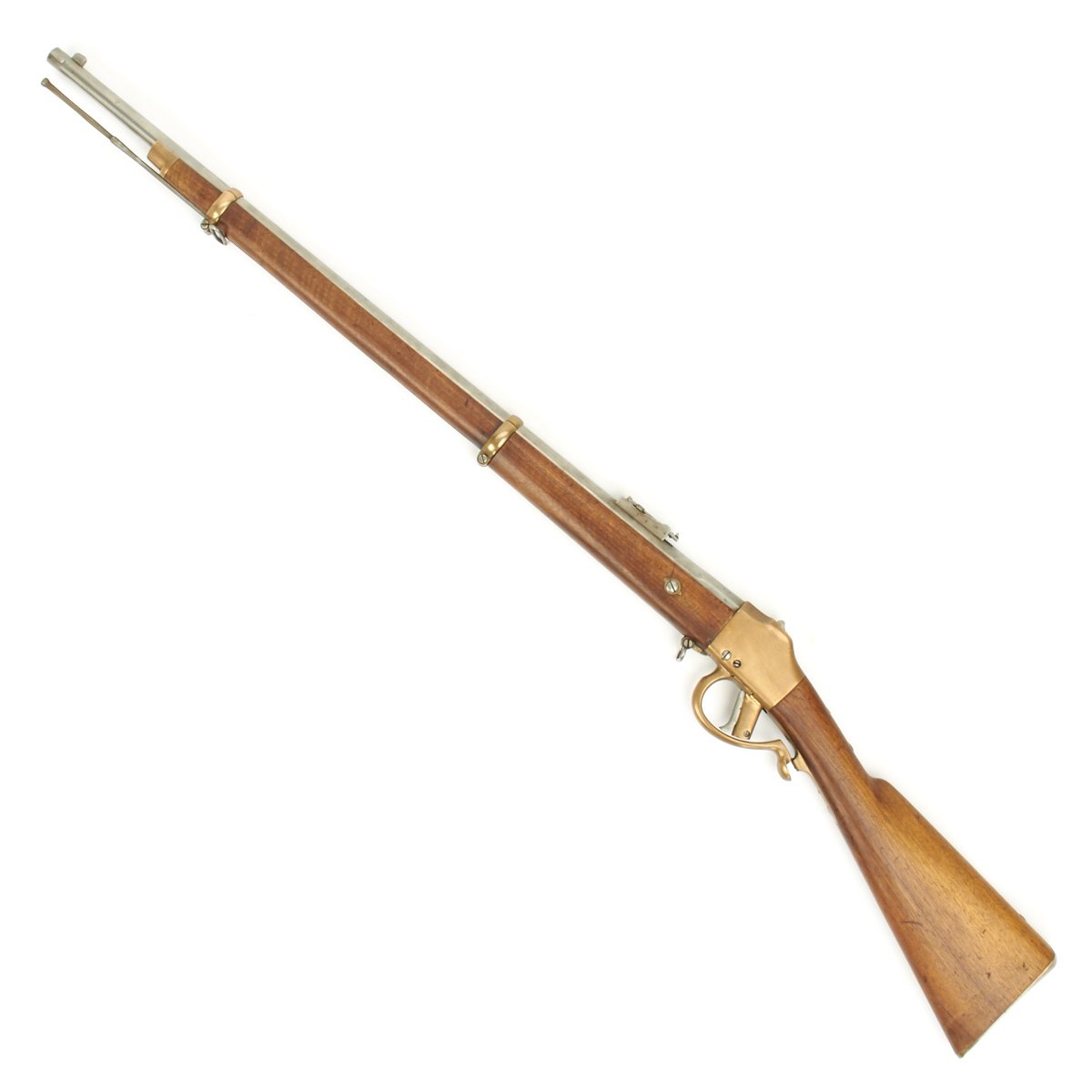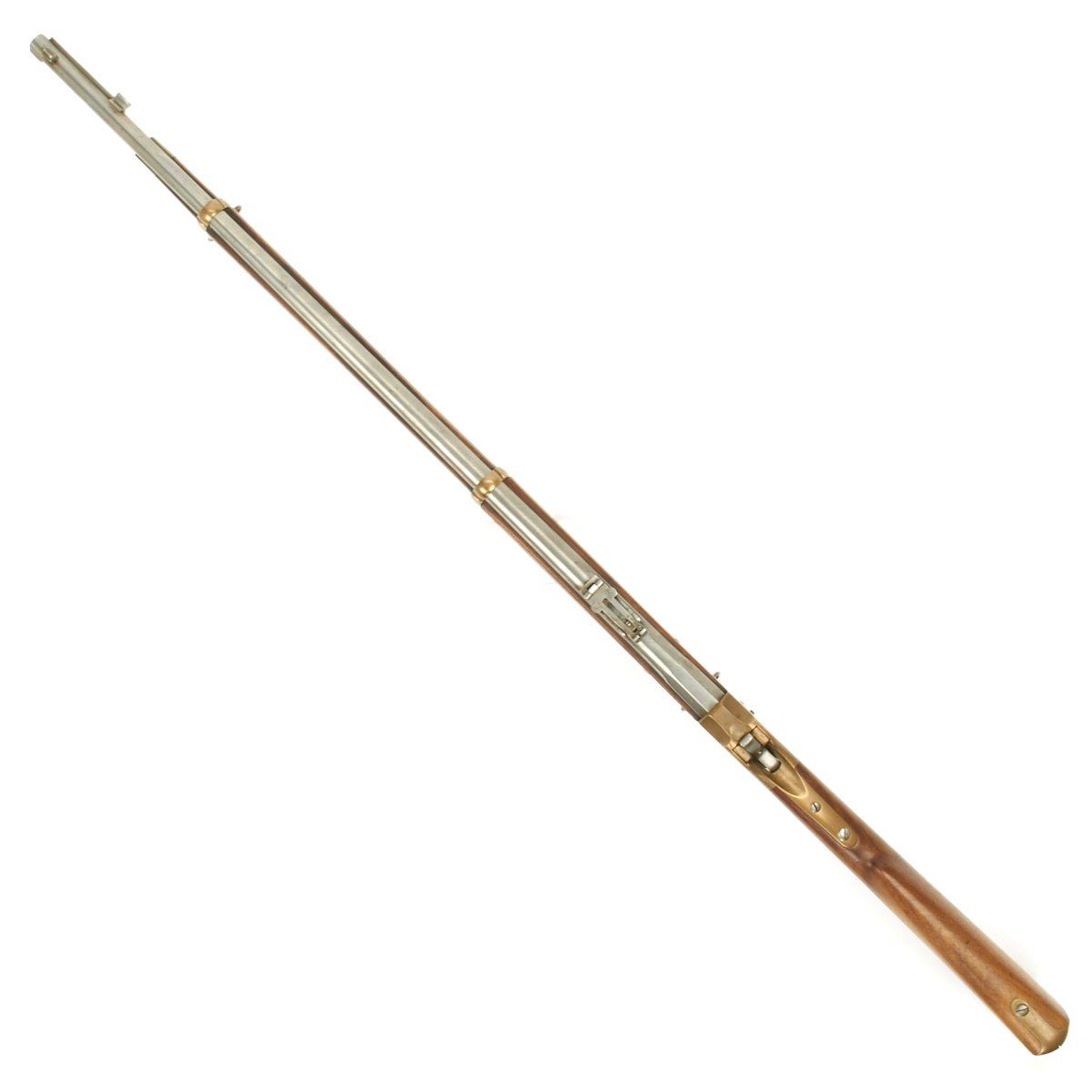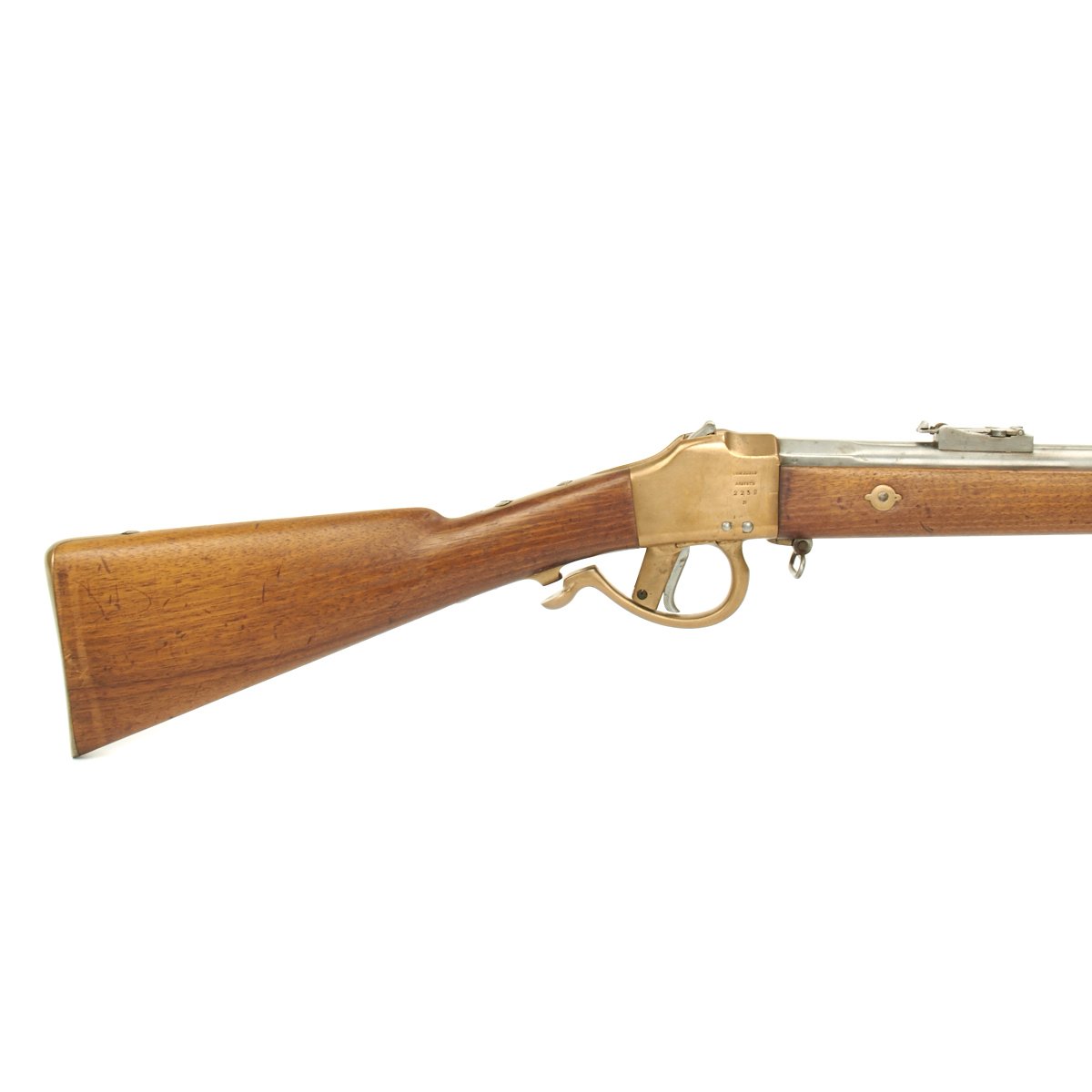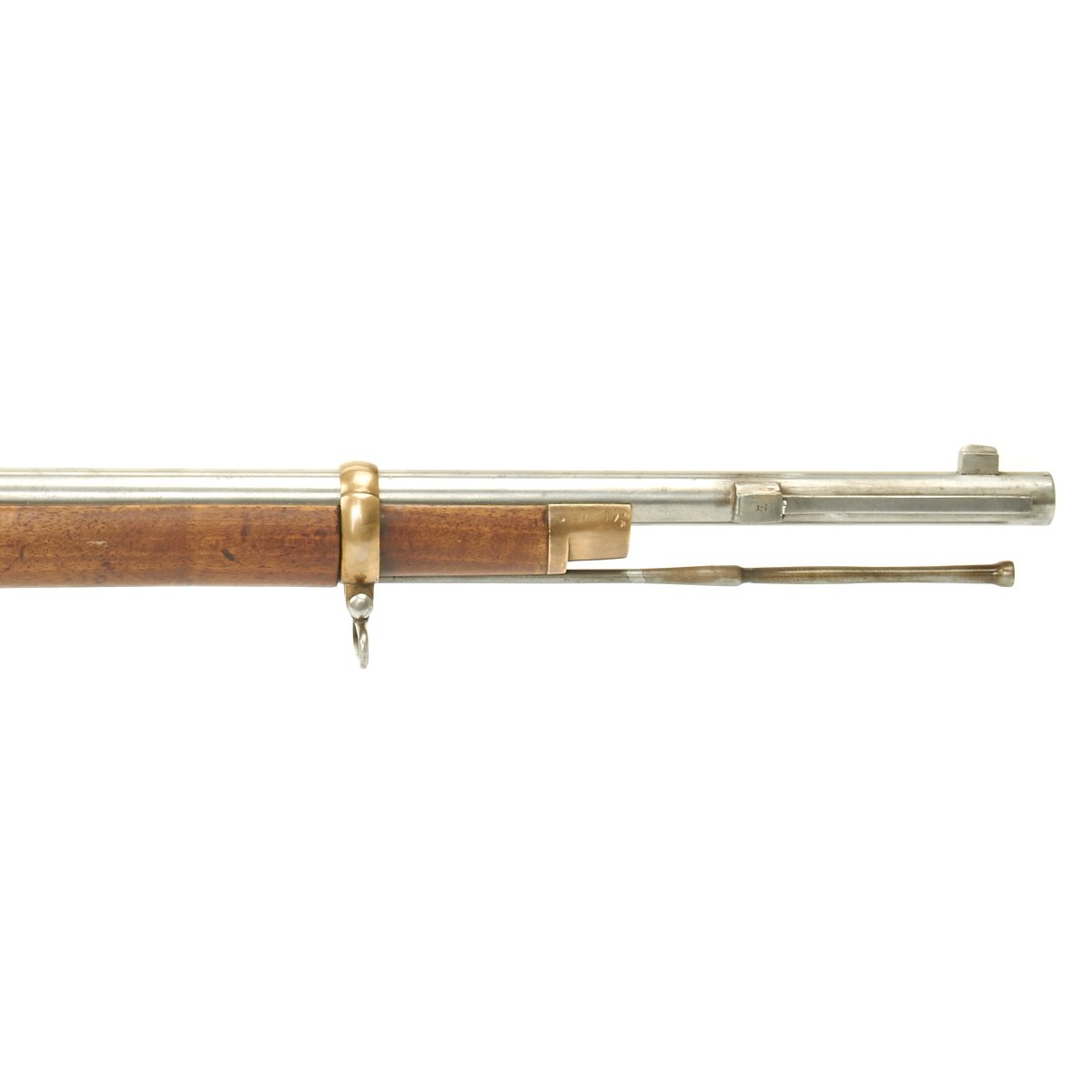Original Belgian Brass-Framed M-1870 Comblain Infantry Falling Block Rifle Original Items
$ 2.195,00 $ 548,75
Original Item: One Only. Invented by Joseph-Hugo Comblain, a Belgian Gun designer from Liege, this is a single short falling block weapon of ingenious design. It was adopted by Belgium, Brazil and Chile, but was up against the British Martini Henry Rifle of even better design that dominated most of the 1870s. It is marked on the side of the receiver with:
COMBLAIN
BREVETE
2252
B
It was described by W.W Greener in his 1871 book Modern Breechloaders: Sporting and Military (page 214):
This rifle is called No.2, to distinguish it from the first Comblain, which is a modification of the Snider principle. The Comblain no 2 has the vertical sliding block and guard lever of the Sharp rifle; but the arrangement for exploding the cartridge is different.
The mechanism of the lock is fixed in the breech block, which consists of the ordinary main-spring acting upon a tumbler by a swivel. The tumbler and striker are made in one piece; the sear and trigger are also in one piece . By depressing the lever the breech block is brought down, the cartridge-case extracted and the rifle is cocked. A fresh cartridge being inserted, and the lever returned, the rifle is ready for firing.
The hinge screw can be removed without the aid of a turnscrew, which arrangement allows the breech block and lock to be taken out for the purpose of cleaning.
The breech arrangement is strong and simple. It is used by the Belgian volunteers, and has been severely tested both at Liege and Wimbledon.
This example bears serial numbers 2252, and is in truly excellent condition. Any Comblain rifle is hard to find today, however BRASS framed Comblains are exceedingly rare. This is only the second Comblain Brass-Frame that IMA Director Christian Cranmer has had the opportunity own, the last time being almost half a century ago. In that time he does not recall seeing another brass frame available. The brass frame may have been intended for the tropical climate of Brazil, but this one was put into service in Belgium.
This example is FABULOUS, in just wonderful condition and was obviously never issued to be used in combat and remained as a “specimen” in various collections ever since. Almost impossible to find and ready to display
NOTE: International orders of antique firearms MUST be shipped using UPS WW Services (courier). USPS Priority Mail international will not accept these.
Fast Shipping with Professional Packaging
Thanks to our longstanding association with UPS FedEx DHL, and other major international carriers, we are able to provide a range of shipping options. Our warehouse staff is expertly trained and will wrap your products according to our exact and precise specifications. Prior to shipping, your goods will be thoroughly examined and securely secured. We ship to thousands clients each day across multiple countries. This shows how we're dedicated to be the largest retailer on the internet. Warehouses and distribution centres can be located throughout Europe as well as the USA.
Note: Orders with more than one item will be assigned a processing date depending on the item.
Before shipping before shipping, we'll conduct a thorough inspection of the items you have ordered. Today, the majority of orders will be delivered within 48 hours. The delivery time will be between 3-7 days.
Returns
The stock is dynamic and we cannot completely manage it because multiple stakeholders are involved, including our factory and warehouse. So the actual stock may alter at any time. It's possible that you may not receive your order once the order has been made.
Our policy is valid for a period of 30 days. If you don't receive the product within 30 days, we are not able to issue a refund or an exchange.
You can only return an item if it is unused and in the same state as the day you received it. You must have the item in its original packaging.
Related products
Uncategorized
Angolan Rebel 1970s era 60mm Inert Display Mortar from Angolan Civil War Original Items
Uncategorized
Australian WWII Owen MK1 Machine Carbine SMG Custom Fabricated Replica with Sling Original Items
Uncategorized
Uncategorized
Uncategorized
Uncategorized
Band of Brothers ORIGINAL GERMAN WWII Le. F.H. 18 10.5cm ARTILLERY PIECE Original Items
Uncategorized
Uncategorized
Armoured Fighting Vehicles of the World: AFVs of World War One (Hardcover Book) New Made Items
Uncategorized
Uncategorized
Uncategorized
Uncategorized
Uncategorized
Uncategorized
Uncategorized
Uncategorized
Armored Burgonet Helmet & Polearm from Scottish Castle Leith Hall Circa 1700 Original Items












































































